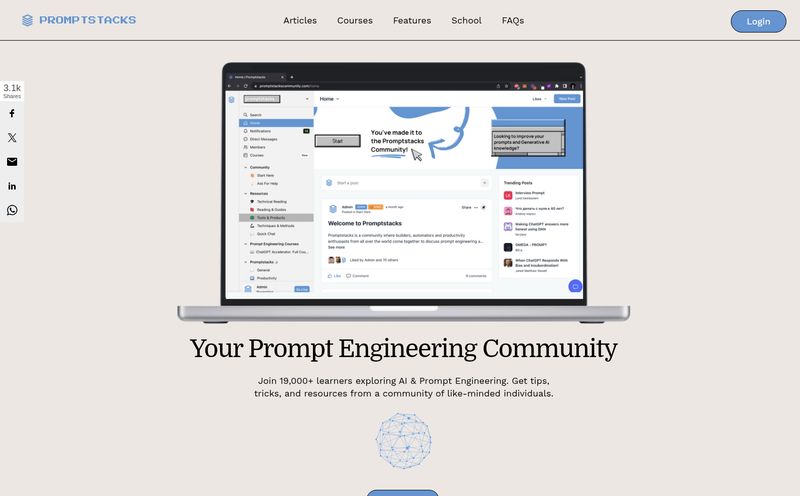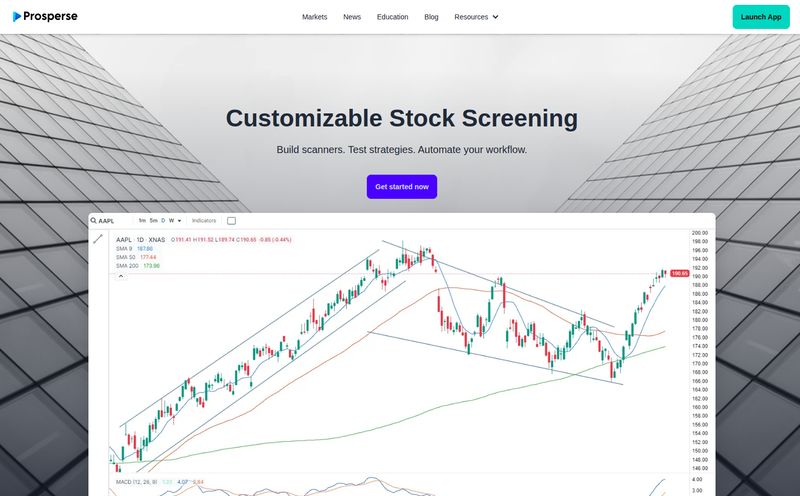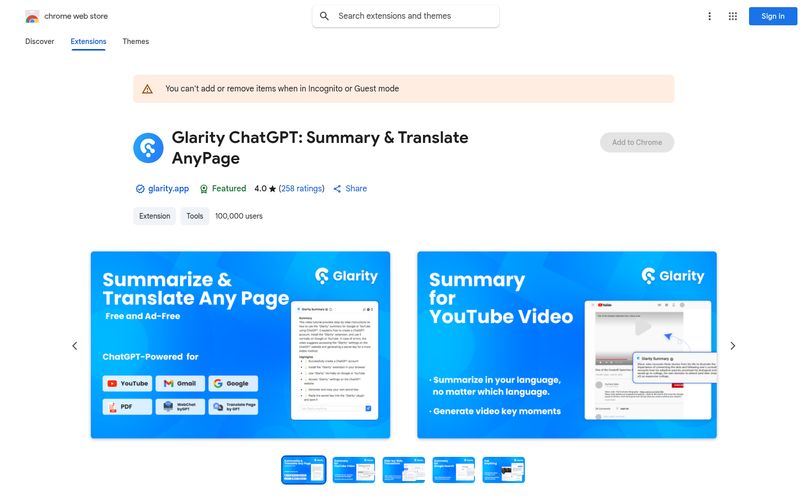I’ve spent more nights than I’d like to admit staring at a spreadsheet full of survey responses, my eyes glazing over. You know the drill. You spend weeks crafting the perfect questionnaire, blast it out to your user base, and get back... a mountain of multiple-choice answers and a few one-word replies in the 'any other feedback?' box. It’s like panning for gold in a river of mud. You get some data, sure, but the rich, narrative gold—the 'why' behind the clicks—is almost always missing.
For years, the alternative has been one-on-one user interviews. They’re fantastic. They’re also a logistical nightmare. The back-and-forth scheduling, the no-shows, the hours spent transcribing and then trying to find patterns... it’s a full-time job. I've always felt there had to be a middle ground.
And then, I stumbled upon UserCall. The pitch is bold: “Get Deep User Insights Effortlessly.” It claims to use an AI agent to conduct 1:1 voice interviews for you. Call me a skeptic, but that definitely got my attention. An AI that does the grunt work of user research? I had to see this for myself.
So, What Exactly is UserCall?
Let's break it down. At its heart, UserCall is an AI-powered platform designed to automate qualitative user research. Instead of sending out a flat, boring survey, you create and share a link. When a user clicks it, they have a voice conversation with a surprisingly natural-sounding AI interviewer. This AI is programmed with your learning goals and asks open-ended, follow-up questions to dig deeper into their experience.
Think about that. It’s not just a form with a voiceover. It’s a dynamic conversation that adapts to the user's answers. It's designed to pull out the stories, the frustrations, and the 'aha!' moments that you’d normally only get from a live conversation. And the best part? It does this on the user's schedule, 24/7, without you having to lift a finger. After the call, the AI gets to work again, transcribing, summarizing, and performing a thematic analysis on the conversation to show you the key patterns. It's wild.

Visit UserCall
The Features That Actually Matter
Okay, shiny new tools are always packed with features, but as a grizzled SEO and traffic guy, I only care about what moves the needle. Here’s what stood out to me.
The AI Interviewer: Your 24/7 Research Assistant
This is the main event. The ability to customize the AI agent is pretty neat. You can set up your specific questions and goals, and UserCall's AI takes it from there, asking intelligent follow-up questions. They also offer support for over 32 languages, which is a massive win for anyone with a global audience. No more trying to find multilingual researchers or dealing with clunky translation services. The voice isn't perfect—it's not going to pass a Turing test just yet—but it's clear, friendly, and professional enough to get the job done without feeling too robotic. It's less 'creepy HAL 9000' and more 'helpful, slightly formal assistant'.
Instant Analysis: No More Spreadsheet Nightmares
This, for me, is the real magic. Anyone who has manually coded interview transcripts knows the pain. It takes hours. Days, even. UserCall’s platform automatically transcribes the entire interview and then—and this is the killer feature—it performs an instant qualitative analysis. It identifies key themes, patterns, and even sentiment, presenting it all in a clean, easy-to-digest report.
"You go from a 15-minute user conversation to a full thematic analysis in less time than it takes to brew a pot of coffee. That's not just an improvement; it's a fundamental change to the research workflow."
This completely changes the speed at which you can gather and act on qualitative feedback. It's the difference between getting insights once a quarter and getting them every single week.
Let's Talk Money: UserCall Pricing
Alright, the inevitable question: what's this going to cost? UserCall has a tiered pricing structure that seems pretty standard for a SaaS tool in this space. I’ve broken it down into a simple table.
| Plan | Price | Key Features | Best For |
|---|---|---|---|
| Lite | $89 /month | 15 recordings/mo, 35 analysis runs, 12-min max interview | Freelancers, solopreneurs, or small startups just dipping their toes in. |
| Core | $199 /month | 40 recordings/mo, 100 analysis runs, 20-min max interview, unlimited Q&A | Growing teams, product managers, and UX researchers who need regular insights. |
| Enterprise | Contact for Price | Custom everything: seats, runs, minutes, integrations | Large organizations with dedicated research departments and complex needs. |
In my opinion, the pricing feels fair for the value it provides. The Lite plan is a great entry point, and the Core plan has enough firepower for most serious teams. The fact that they have pay-as-you-go credits is also a nice touch for those times you need to run a bigger campaign. They even mention on their site that they can provide discounts for startups and non-profits, which is a class act.
The Elephant in the Room: Can AI Really Replace a Human Interviewer?
Let's get real for a second. No. And I don’t think UserCall is even trying to. A skilled human researcher can pick up on a subtle sigh, a moment of hesitation, or a flicker of excitement in a way that an AI, at least for now, simply can’t. There's a level of empathy and connection in a great human-to-human interview that is irreplaceable.
Some in the industry might argue that this kind of AI tool risks oversimplifying complex human emotions. And they have a point. If you’re making a multi-million dollar decision based on one set of AI interviews, you might be missing critical context.
However, I think that's the wrong way to look at it. UserCall isn't a replacement for your most crucial, deep-dive interviews. It's a replacement for your surveys. It’s a tool for scaling qualitative feedback. It allows you to have hundreds of mini-conversations and spot trends you would have otherwise missed entirely. It fills the massive gap between shallow quantitative data and time-intensive manual interviews. It's about getting 10x deeper insights than a survey, 10x faster than manual interviews.
Final Thoughts: Is UserCall Worth the Hype?
After playing around with it, I'm genuinely impressed. UserCall is a smart, powerful tool that solves a very real and very expensive problem for product managers, marketers, founders, and UX teams. It makes gathering rich, qualitative data accessible and continuous, rather than a rare, expensive event.
Is it perfect? No. You lose some of the nuance of a face-to-face chat. But what you gain is speed, scale, and the ability to make data-informed decisions on a weekly basis, not a quarterly one. For me, that trade-off is more than worth it. It's a tool that feels like it’s from the future, but it's solving a problem I had yesterday.
Frequently Asked Questions
- Is UserCall meant to replace human interviews or surveys?
- Think of it as a powerful upgrade to surveys and a supplement to in-depth human interviews. It gives you the narrative depth of an interview at the scale of a survey, filling a critical gap between the two.
- How does the AI handle qualitative data analysis?
- The platform automatically transcribes the voice interviews and then its AI analyzes the text to identify key themes, patterns, and insights. It presents this in a summarized report, saving you from hours of manual work.
- Can I customize the interview questions and AI agent?
- Absolutely. You can define the learning goals, script the core questions, and even choose different voices for the AI agent to create an experience that aligns with your brand.
- What languages does UserCall support?
- The platform supports over 32 languages, making it a fantastic tool for gathering feedback from a global user base without needing a team of multilingual researchers.
- How long do the AI interviews typically last?
- The interview length is customizable depending on your plan. The Lite plan allows for up to 12-minute interviews, while the Core plan goes up to 20 minutes, which is plenty of time to gather substantial feedback.
- How does UserCall help minimize bias?
- The AI agent asks questions in a consistent, standardized way for every participant. This reduces the risk of interviewer bias—where a human might unconsciously lead a user or react to their answers—resulting in more objective data.
Conclusion
The way we gather user feedback is changing. The old methods are slow and often lack depth. Tools like UserCall are at the forefront of a new approach, one that blends the conversational power of interviews with the scale and speed of automation. It’s an exciting time to be in this field, and I for one am thrilled to have a tool like this in my arsenal. It's not about replacing humans; its about empowering them to do more, faster.



